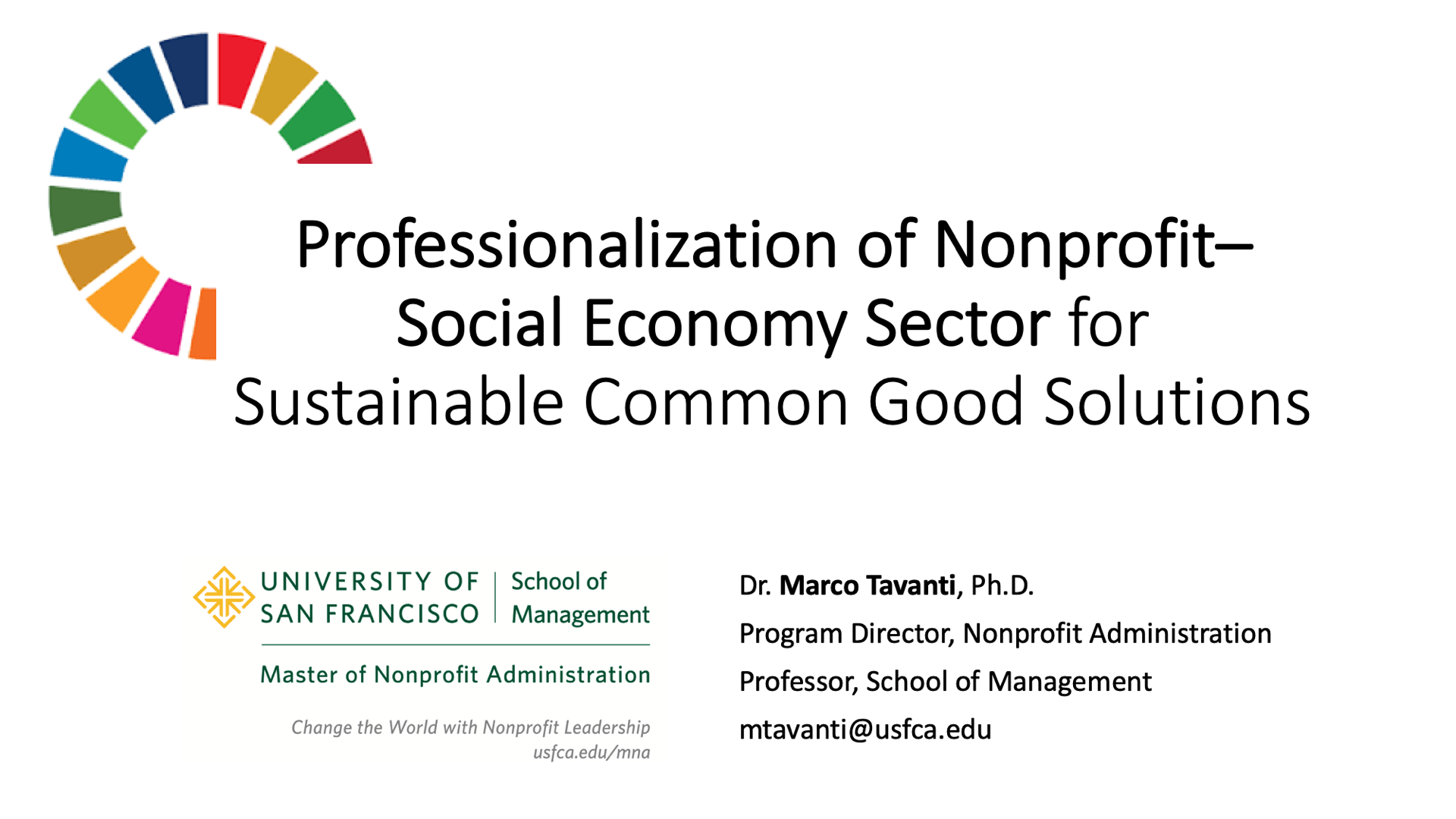By: Brandon Jones, Greg Justice, and Elizabeth Silva,
2017-18 Full-Time Cohort

The study of ethics – historically known as “Moral Philosophy” – traces its roots to the time of early Greece, having been discussed significantly by Socrates and Plato (01), and mainly, in the pursuit of “justice.” (No relation.)
Fast forward over two millennia – give or take a few hundred years, and we find ourselves studying ethics in a new capacity. That is, how do we build an ethical and socially responsible student government from the ground up, paying tribute today’s standards, yet leaving an ethical structure for future cohorts?
The University of San Francisco’s Master of Nonprofit Administration (“MNA”) has within the program a fully autonomous student government – the Nonprofit Student Council (“NSC”). NSC serves the needs, ideas, and professional development of the MNA student body. In our official affairs, governing documents, and the spirit of our governance, NSC is building an ethical foundation, providing a respectful and dignified environment for current and future students.
NSC’s Core Values
From the very beginning of NSC’s deliberations, the executive board – the collective six officers pictured right – has stressed the need for engagement, collaboration, and representation; access and inclusion; oversight and accountability; and, most importantly,  diversity, as our guiding principles. As the governing council for MNA students, we benefit greatly with these values, making sure we do our best to represent every student in a thoughtful and equitable manner.
diversity, as our guiding principles. As the governing council for MNA students, we benefit greatly with these values, making sure we do our best to represent every student in a thoughtful and equitable manner.
NSC’s Mission Statement
Our guiding principles are best embodied in the NSC mission statement, memorializing our official commitment to these values. The purpose of NSC is to, “provide a unified voice for students with a focus on promoting and improving the MNA program at The University of San Francisco. The NSC provides a vehicle for student perspectives, ideas, and a means of promoting events on behalf of the student body. The NSC club will promote co-curricular activities pertinent to the nonprofit field as well as support and encourage collaboration with other nonprofit professionals…” Again, embedded in NSC’s mission statement is collaboration, representation, and inclusion, all being values allowing for ‘better’ and inclusive governance.
Code of Ethics
NSC has recently initiated the process for designing a Conflict-of-Interest policy, catered to our specific affairs and operations, and will be considering this at the next officer’s meeting. Besides implementing this best practice, the executive board values an orderly governance system, equally available and protective of all parties. Despite having a Treasurer and Vice-President for Communications, all financial records and official communications are shared with officers, program and university officials, and most importantly, MNA students. (We have even established a program-wide email listserv, guaranteeing all MNA students – part- and full-time – are well-informed, and have a timely accounting of their officer’s.)
Ethics Officer
Unlike other student governments and organizations, NSC has taken the step to permanently secure the implementation of oversight, access, accountability, and other related practices, with a new officer position. Appointed just last week, Greg Finkelstein serves as the Director of Standards and Practices, ensuring organizational compliance with governing and ethical protocol. Finkelstein also chairs the newly formed Standards and Practices Committee, bringing in independent and impartial students overseeing NSC’s compliance.
Structure
When considering any program, service, or obligation, NSC creates an “Officer’s Report,” providing assessments for risk, finance, governance, and overall compliance. These reports provide an extra layer of administrative and ethical analysis, making sure our values and guiding principles are effectively considered in all matters before the executive board.
The board also recently adopted a 72-hour deadline for introducing and disseminating all agenda items and reports, guaranteeing equal access and consideration to all parties and stakeholders in official affairs. Further, although our meetings regularly take place physically on our campus, all meetings are also broadcast via Zoom – a webinar platform, allowing all who desire to participate to do so.
Conclusion
Further ethical drivers – such as, risk assessment and governance analyses, leadership and ethics trainings, as well as, organizational socialization – will be the path NSC takes in our ongoing ethics quest. Despite implementing these best practices and guiding principles, NSC cannot rest on any laurels, as we recognize maintaining an ethical and socially responsible organization requires continuous development, organizational reflection, and ongoing assessment and refinement of the overall governing structure.
For more information about NSC, please contact NSC@usfca.edu, or visit our website at www.usfnsc.org, or Twitter @usfnsc.
Silva serves as Secretary, Justice as President, and Jones is a contributor to NSC’s development.











































































